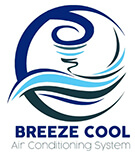When we talk about the essentialities at home based on weather, two things flash into our minds. AC for summer and heater for winter. It is a fact that people care for their air conditioners while neglecting heaters. Why is it so? Let us know about your opinion. These people need to realize that maintaining a heater is as essential as AC maintenance. Moreover, to familiarize you with heater maintenance and its DIY steps, we decided to go for this blog.
Furthermore, it is all about our blog today: the significance of heater maintenance and DIY steps to perform this duty. One more thing that will become a part of this blog is your frequently asked questions. So, this blog is not just about our knowledge but your queries as well. So, do not break the connection with this write-up until it ends. We ensure this blog will help you to save money and keep your machine maintained as well. Let us start our discussion with the importance of heater maintenance!
Importance of heater maintenance
Understanding the importance of maintaining the heating devices is essential so you may avoid any bothersome weather next winter. Before digging into the importance of a heating system, we need to understand that a heater or an AC installation is not a big deal, but their maintenance is. Maintaining a heater regularly is essential for lifespan and optimum performance. Moreover, it reduces energy costs, guarantees effective heating, and guards against unplanned malfunctions. On the other hand, by cleaning and examining parts, you might spot any problems early and save money on repairs.
Talking more about it, routine maintenance prevents gas and carbon monoxide leaks, which in turn reduces the danger of safety breaches. In contrast, disregarding maintenance can result in reduced effectiveness, increased energy usage, and compromised safety. However, you can have a dependable and secure heating system by arranging for regular inspections or performing them yourself. It becomes a system to guarantee the promotion of comfort and tranquility of mind throughout the winter months.
Heater Maintenance checklist on a DIY basis
- Replace the furnace filter
- Examine the flames in the burner.
- Make the blower clean.
- Examine the drive belt for deterioration.
- Clean the Flame Sensor.
- Dust the Hot Surface Igniter and Pilot
- Stop Vent Leaks
- Examine the exhaust and intake air pipes.
So, it is the checklist of heater maintenance with DIY steps. Now, it is time to look there steps briefly.
1. Change Your Furnace Filter
Change the furnace filter regularly. Completing this little chore once a month guarantees ideal ventilation. It keeps dust from building up and improves heating efficiency by enabling the system to run smoothly.
2. Check Burner Flames
Check that the burner flames are always a uniform shade of blue because this color denotes appropriate combustion. Adjustments are required if they seem yellow or flicker, as these symptoms may point to possible problems with combustion efficiency.
3. Vacuum Burners
Use a vacuum to remove dust and debris from burners carefully, because it keeps the fuel-burning process running smoothly. On the other hand, it avoids any obstructions that can impair the heating system’s functionality.
4. Clean the Blower
For the best heating, a blower that is kept up to date is essential. To improve airflow, dust the motor and blower blades. By taking this proactive step, the system is less stressed, which increases system longevity and maintains efficiency.
5. Check the Drive Belt for Wear and Tear
Check for wear and tear on the drive belt regularly. Smooth functioning may be compromised by fraying or cracks. When the belt has to be changed, do it right away to guarantee uninterrupted operation of the heating system.
6. Clean the Flame Sensor
Use fine sandpaper to clean the flame sensor to preserve its accuracy carefully. This tiny but essential part accurately detects the burner flame to provide even heating.
7. Dust the Pilot and Hot Surface Igniter
Dust off the hot surface igniter and pilot to improve ignition performance. This contributes to the overall efficacy and efficiency of the heating system by guaranteeing a clean and dependable ignition.
8. Seal the Leaks in Vents
Look for any possible leaks in the vents. Sealing gaps increases energy efficiency by preventing heat loss. This small yet effective action helps keep the inside climate comfortable and saves energy expenses.
9. Check Air Intake and Exhaust Pipes
Protect your heating system by checking for blockages in the exhaust and air intake pipes. Make sure there’s enough ventilation, and remove any debris quickly to avoid any potential safety risks. The long-term viability of the system and user safety depends on this proactive approach.
Conclusion
In conclusion, regular heater maintenance is not just a task; it’s a key investment in your comfort and safety. You can guarantee maximum performance, lifespan, and energy efficiency by following a straightforward do-it-yourself checklist. To ensure optimal combustion, change the furnace filter regularly, rapidly address drive belt wear, and maintain blue burner flames. A dependable heating system is ensured by routine cleaning of critical parts like the flame sensor and blower. By being proactive, you may avoid wasting money and have peace of mind throughout the colder months.
Q. What are the benefits of timely heater repair?
Timely heater repair keeps minor problems from developing into expensive malfunctions. It guarantees a warm, safe house, improved air quality, less energy costs, and an extended heater life. Overall, it keeps you comfy and saves you money.
Q. How will you maintain my heating system as a service provider?
We will check for wear on the outside of your heater and the ventilation system, and we will make any required repairs. The inside parts of your furnace will next be cleaned and examined for indications of deterioration. The blower, motors, pressure switches, and ignition system are all included in this.
Q. What is the heater’s temperature maintenance procedure?
A thermostat controls the amount of heat produced by the heater to maintain temperature. The thermostat first detects the surrounding air temperature. It then turns on the heating element to maintain a constant temperature. It also senses changes and quickly adapts to keep the temperature at its ideal level, generating a cozy and effective heating environment.
Q. Why does a heater cease functioning?
The most common reason why a heater breaks down is generally due to improper maintenance. A filthy furnace is usually the only problem. For this reason, it’s critical to plan routine maintenance for your appliances, including your furnace. The solution: Give the local heating contractors a call.

